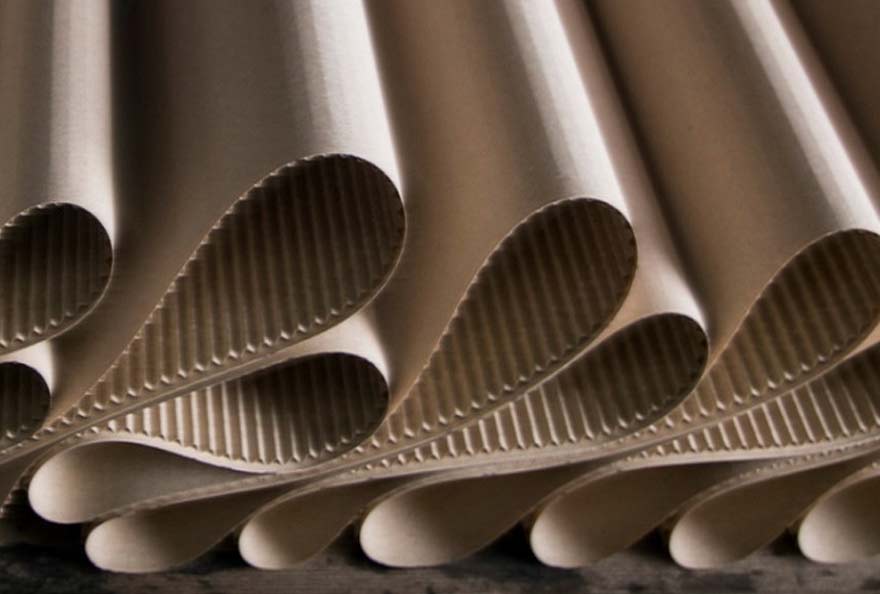Electronic fibres, "supra-textiles", smart-textiles, cosmeotextiles, electro-active textiles, ... textile innovations are revolutionising clothing and the whole world of design. There are also challenges to be met to make clothing communicate. It must be able to generate and store energy, while being easy to maintain and environmentally neutral. Not forgetting the e-health sector, where extracting health information from people's bodies can provide care or prevent disease. Innovative principles are therefore no longer the prerogative of textile specialists and now permeate all industries, being integrated into all types of materials, designed for multiple fields of application. As a transversal, hybrid and combinatorial element, textiles represent a new future for the digital man of tomorrow.
The seminar " E-textile and smart accessories "from the Aristotle Association to the Ecole Polytechnique made us discover the major advances in the textile sector. this past October 16th.
Ahe 20th century was the century of industry, France was a pioneer in many fields, but for decades now we have seen that globalisation has caused the collapse of certain industries in France, particularly the textile industry.
Indeed, the decline of this sector in favour of a more advantageous labour force in the countries of the region has been powerless to change the situation. "low cost", Asia, Eastern Europe, Africa. As a result, factories in this sector were forced to close one after the other and the centre of gravity of production shifted eastwards. The problem today is how to regain the lead in this market?
In this difficult context of wealth creation for tomorrow's job creation, if France wishes to become a player in this field again, the solution is simple and unique, only innovation will enable it to meet this challenge. Innovation will have to come from ICT, intelligent sensors, artificial intelligence and all these new technologies to make textiles intelligent.
The aim of this day was to discover the major advances in this field, thanks to the ecosystem of open innovation that the Techtera and UP'Tex competitiveness clusters, in particular, are working to build by matching offers with demands, key accounts with startups for the benefit of all the players in the sector.
To help us discover this subject, Bruno Mougin, Julien Payen and Bernard Monnier have selected a panel of experts, researchers, entrepreneurs, industrialists,...
Scientific Coordination :
- Bernard Monnier (MIM)
- Bruno Mougin (Techtera)
- Julien Payen (UP Tex)
PRESENTATION OF TOPICS
- Textiles and soft materials, Bruno Mougin, Techtera competitiveness cluster
- Connected projects, presentation of the ITU White Paper and standardization in this field, Julien Payen, UP-tex competitiveness cluster
- Textiles to tame the digital man, Christine Browaeys, T3Nel, specialist in innovative textile materials
VIDEO OF THE INTRODUCTION BY CHRISTOPHE CALVIN AND BERNARD MONNIER, INTERVENTIONS BY BRUNO MOUGIN, JULIEN PAYEN, CHRISTINE BROWAEYS
INTELLIGENT TEXTILE RESEARCH :
- Electronic textiles, Vladan Koncar, Gemtex-Ensait Laboratory
- New sensors for intelligent objects and clothing: from mechatronic 3D printing of plastic sensors to electroactive textiles, Medhi Ammi, LIMSI CNRS
- Three-dimensionally dynamic textiles for the home environment, Aurélie Mossé, ENSAD
- Innovative textiles, Chloe Salmon-Legardeur, ESTIA
- The naked and the clothed: when the garment cares, Judith Nicogossian, anthropological researcher
VIDEO OF THE INTERVENTIONS OF GUILLAUME TARTARE, MEHDI AMMI, AURÉLIE MOSSÉ, CHLOÉ SALMON-LEGAGNEUR
OPERATIONAL REQUIREMENTS :
- Uses in the field of insurance, Anne-Sophie Godon, Malakoff Mederic
VIDEO OF THE INTERVENTIONS OF ANNE-SOPHIE GODON, JUDITH NICOGOSSIAN, NATHALIE PUIGSERVER, PIERRE PIGNAL, MICHEL CAILLIBOTTE
STARTUPS AND SMES PRESENT INNOVATIVE PRODUCTS:
- Connected textiles, Jean-Luc Errant, Citizen Sciences
- Connected clothing for seniors, Michel Caillibotte, Damartex
- Intelligent textiles based on optical fibres: achievements and prospects, Constance Moretti, Brochier Technologies
- Diagnostic garments - Textronic platform for the industrialization of connected second skin garments, Marc Frouin, Bioserenity
- Warm clothes, Guillaume Tiberghien, Tibtech
- The energy-recovery clothes, Patrick Guilleminot, Mulliez Flory
- Electronic integration on elastic fabrics, Jean-Philippe Gauthier, Eolane
- The smart anti-pollution scarf, Caroline Van Renterghem, Wair
- Studio TwinsParis, interaction matter(s), Nancy and Lou Anne Boehm, Luminous Textile Artists
VIDEO OF CONSTANCE MORETTI'S INTERVENTIONS, NANCY AND LOU ANNE BOEHM, MARION BENQUET, GUILLAUME TIBERGHIEN, CAROLINE VAN RENTERGHEM
VIDEO OF CONSTANCE MORETTI'S INTERVENTIONS, NANCY AND LOU ANNE BOEHM, MARION BENQUET, GUILLAUME TIBERGHIEN, CAROLINE VAN RENTERGHEM
THE LAWYER'S POINT OF VIEW:
- Is the positive law in force in France and in the EU adapted to meet the multiple legal challenges inherent in these complex innovations? Nathalie Puigserver, P3B Lawyers
Abstracts of presentations
|
Bruno Mougin
|
Clothed, connected?
|
This presentation will be based on Bruno Mougin's experience as the leader of a club that groups around the theme of smart textiles and connected portable objects. His vision was born from this experience, from meeting with a wide variety of actors and observing the many exchanges and initiatives that arose from it.
The craze around intelligent textiles is international; it seems to be growing and spreading to the economic sector. New players are appearing, which are disrupting traditional players and their systems of thought. It is obvious today that the "textilian" can no longer be a seller of material, or even of machine time. He is moreover aware of this necessary (and sometimes reluctant) evolution.
The tools available (design thinking, business model...) allow it to rethink its place, give it food for thought. It seems that the most convincing one is the collaborative one. So what is the point of this new co-creation? To create the textile of tomorrow, connected, capable of capturing its environment and interacting. Capable of interface and connections. The most advanced research on fibretronic is aimed at developing electronic fibres. The outcome of these developments will make it possible to create intelligent textiles that retain the intrinsic properties of textiles (conformability).
Bruno Mougin is project manager & leader of the "Smart textiles & wearables" club.
|
Christine Browaeys
|
Textiles to tame the digital man
|
Artificial environments to assist us in our daily lives: Never before has humanity developed so much technical and information potential to transform its environment and knowledge, and this complexity is increasingly masked by natural interfaces, such as the voice. Digital continuity allows as a "virtual amplification" of reality, thanks to the simultaneous management of several levels of involvement.
With the concept of the Internet of Things (IoT), physical objects, data and virtual environments interact with each other in the same space-time. Objects become alive as interactive and collaborative, creating artificial environments that help us proactively and reactively.
Communicating matter, or how to disseminate data in matter: Today, textiles allow a profusion of hybrid materials, distributed in the three dimensions, with the help of mathematics and computer science to imagine new interweaving, and infinitely variable structures. Supra-textiles" combine advanced technologies, and their expansion seems inevitable, given their capacity for integration, communication and adaptation, just like ICTs. Thus, textile material can be conceived as a complex network integrating a lattice of micro-channels of fibres, similar to the veins and nerves that criss-cross the human body. Textiles could therefore become intrinsically communicating (e.g. the work of the Centre de recherche en automatique de Nancy).
Textiles for a new mode of sensitive communication: Today, information technology tends to become ubiquitous, even diffuse, invasive in every so-called intelligent, dual physical and virtual object. But the brain needs time, to formalize its communicating material, information, a constituent element of social life. The two senses of sight and hearing have given themselves over to a theory of coding, which communications technology has endeavoured to extend through networks. But the perceptive being is composed of the body plus the space surrounding it. Smart textiles can be seen as a "second skin" where embedded technologies will amplify the cognitive characteristics of our senses. Computing and data manipulation could create visual or tactile experiences, transmitted remotely to the wearer of the smart garment (e.g. development of a tactile stimulator to simulate real textures (L2EP, LPMT, Lille1)).
Textiles, because of their affinity with man, seem an obvious solution for making dematerialized services (re-materialization) real.
|
Mehdi Ammi
|
New sensors for intelligent objects and clothing: from mechatronic 3D printing of plastic sensors to electroactive textiles
|
The advent of the Internet of Things, intelligent clothing and the many personal services they provide, are pushing us to rethink the way we design and manufacture their electronics, especially the sensors that are in contact with the user. Indeed, the new usage constraints require us to offer solutions that are comfortable, tropicalized, with metrological characteristics adapted to the applications, and of course with low manufacturing costs.
This presentation aims to address the advances at NRC- LIMSI in the field of new textile and printed sensors. We will first focus on the latest advances in 3D printing and organic electronics for the printing of functionalized plastic structures integrating electronic circuits, electronic components and sensors. We will then present our results concerning the weaving of sensors with functional yarns to elaborate textile sensors particularly adapted for the analysis and monitoring of the activity.
|
Aurélie Mossé
|
Gossamer Timescapes and other material tales: research rooted in the practice of active textile design for the home environment
|
This presentation will introduce a research approach rooted in design practice exploring how active textiles can inform new poetic and cultural possibilities for so-called "smart" technologies. More specifically, the discussion will focus on the role that three-dimensionally active textiles can play in building a culture of interconnectedness in the Western home environment. The presentation will be based on artifacts such as the Photovoltaic Musharabieh, a textile membrane that changes shape and produces electricity in response to solar patterns, and Reef, a canopy that changes with the rhythms of the wind. Together they not only suggest new opportunities for smart technologies but also demonstrate the value of interdisciplinary collaborations at the crossroads of science and design.
Aurélie Mossé, PhD, Lecturer, Professor, Ensadlab, Ecole Nationale Supérieure des Arts Décoratifs, PSL Research University
|
Judith Nicogossian
|
As the heir of connected objects, intelligent clothing is part of the e-health structure. A booming market, cross-knowledge between medical sciences and textile industries, it is used to extract health information from each person's body, to provide care, prevent diseases or predict them, ubiquitously and continuously, without the need for consultation/hospitalization! It engages an enlightened and active participation of the person wearing it, in a personalized way, a bit like a traditional garment...
The e-textile proposes an improvement in the individual's ability to heal himself, an anthropotechnics. What is the history of clothing, which shapes the body? Functional, aesthetic and now care values, clothing modifies the relationship to oneself, to others and to the environment - but beyond that, it calls for an aesthetic transformation of the senses, like touch, a real cyborg second skin. What will tomorrow's skin look like?
|
Constance Moretti
|
Intelligent textiles based on optical fibres: achievements and future prospects
|
In 1999, Brochier Soieries, a traditional weaving company in Lyon, made the first luminous dress for Olivier Lapidus, designed using Jacquard fibre optic weaving. In 2007, this activity led to the creation of the company Brochier Technologies.
After several international patents, Jacquard weaving of luminous fiber optics is today used for a wide range of applications, from lighting to communication, to the environment (depollution by photocatalysis), health (phototherapy, especially for jaundice in infants), wearables and even flexible sensors.
The intelligent luminous textile Lightex preserves all the advantages of textiles (flexibility, lightness, permeability) while allowing very innovative uses previously limited to rigid objects. Many perspectives are already considered for this very innovative fabric.
|
Nancy & Lou Anne Boehm
|
Studio TwinsParis, interaction matter(s)
|
Nancy Boehm regularly speaks on the subject of intelligent textiles and the ethical impact of new embedded technologies on the body (CETI,- Centre Européen du Textile Innovant, Futur en Seine, Technarte - Los Angeles University, le Grand Palais, La Gaité Lyrique...) and is invited to show her prototypes at trade shows and catwalks (Fashion Week Dublin, Avantex, Who's Next, Heimtextil Messe Frankfurt, FashionTech Week Paris...). Indeed, Nancy has a particular attraction for subjects dealing with social and intergenerational links, sensitive interactions, serendipity, alternative forms of communication, environmental risks and innovative ecological and sustainable solutions, including the "Slow" movement.
She is currently the bearer of the Maase project, the 1st companion plea. It is an interactive plaid dedicated to relaxation and well-being to encourage and accompany moments of disconnection in everyday life. This project, which began in 2015, is currently hosted at Innotex, CETI's startup incubator.
Twin sisters designers, Nancy & Lou Anne Boehm have merged their know-how and skills in user experience design and innovative textiles to found together STUDIO TWINS PARIS, an atypical design studio, around 4 main activities: Training and project support, Prototypes at the heart of the new possibilities of flexible materials and tangible interfaces, Designing products at the pace of changing needs and uses; Visual productions, design, fashion and crafts.
|
Nathalie Puigserver
|
Is the positive law in force in France and in the EU adapted to meet the multiple legal challenges inherent in these complex innovations?
|
Intelligent accessories are complex innovations with enormous potential that will change many sectors of activity and our daily lives in the very short term. In addition to their primary functions, these physical objects are now connected, communicating and collaborative; capable of collecting data for innovative services.
These "legal UFOs" pose multiple legal problems, particularly in terms of the distribution of responsibilities in the event of damage, in relation to the application of intellectual property rules and, above all, because of the risks incurred in the event of a breach of the confidentiality and security of the data collected.
Is current positive law capable of dealing with the multiple facets of connected objects and providing the operators concerned and consumers with the means to secure future uses and transactions? This is an essential question and one of the keys to the economic success of Web 3.0.
Nathalie Puigserver is a lawyer specialising in NICTs, Partner at P3B AVOCATS..













